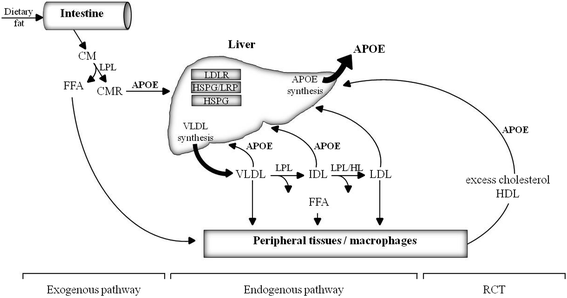APOE genotype and stress response - a mini review
- PMID: 27457486
- PMCID: PMC4960866
- DOI: 10.1186/s12944-016-0288-2
APOE genotype and stress response - a mini review
Abstract
The APOE gene is one of currently only two genes that have consistently been associated with longevity. Apolipoprotein E (APOE) is a plasma protein which plays an important role in lipid and lipoprotein metabolism. In humans, there are three major APOE isoforms, designated APOE2, APOE3, and APOE4. Of these three isoforms, APOE3 is most common while APOE4 was shown to be associated with age-related diseases, including cardiovascular and Alzheimer's disease, and therefore an increased mortality risk with advanced age. Evidence accumulates, showing that oxidative stress and, correspondingly, mitochondrial function is affected in an APOE isoform-dependent manner. Accordingly, several stress response pathways implicated in the aging process, including the endoplasmic reticulum stress response and immune function, appear to be influenced by the APOE genotype. The investigation and development of treatment strategies targeting APOE4 have not resolved any therapeutic yet that could be entirely recommended. This mini-review provides an overview on the state of research concerning the impact of the APOE genotype on stress response-related processes, emphasizing the strong interconnection between mitochondrial function, endoplasmic reticulum stress and the immune response. Furthermore, this review addresses potential treatment strategies and associated pitfalls as well as lifestyle interventions that could benefit people with an at risk APOE4 genotype.
Keywords: Apolipoprotein E isoform; Endoplasmic reticulum stress; Immune function; Mitochondrial function; Oxidative stress; Therapeutic intervention.
Figures

References
Publication types
MeSH terms
Substances
LinkOut - more resources
Full Text Sources
Other Literature Sources
Medical
Miscellaneous

